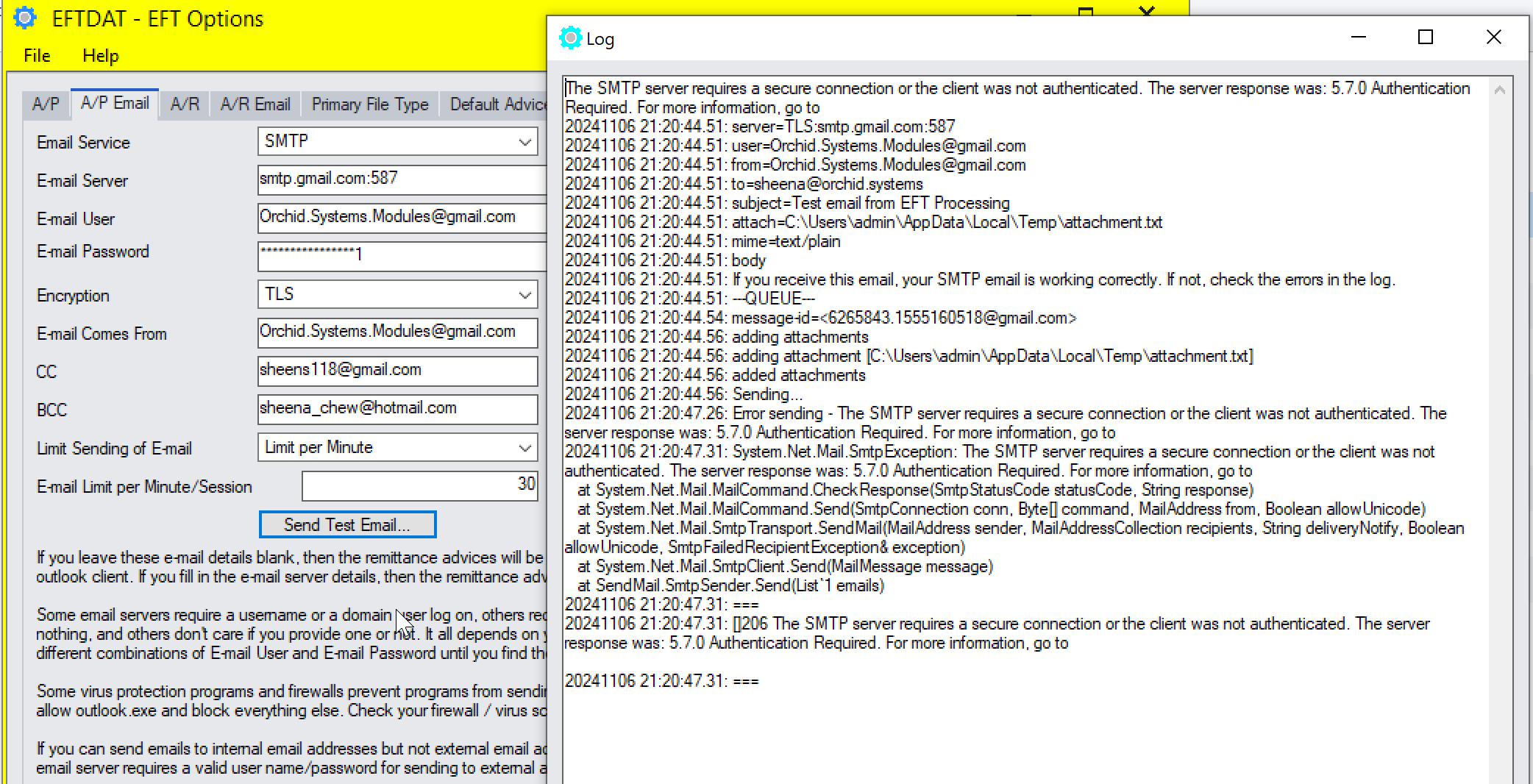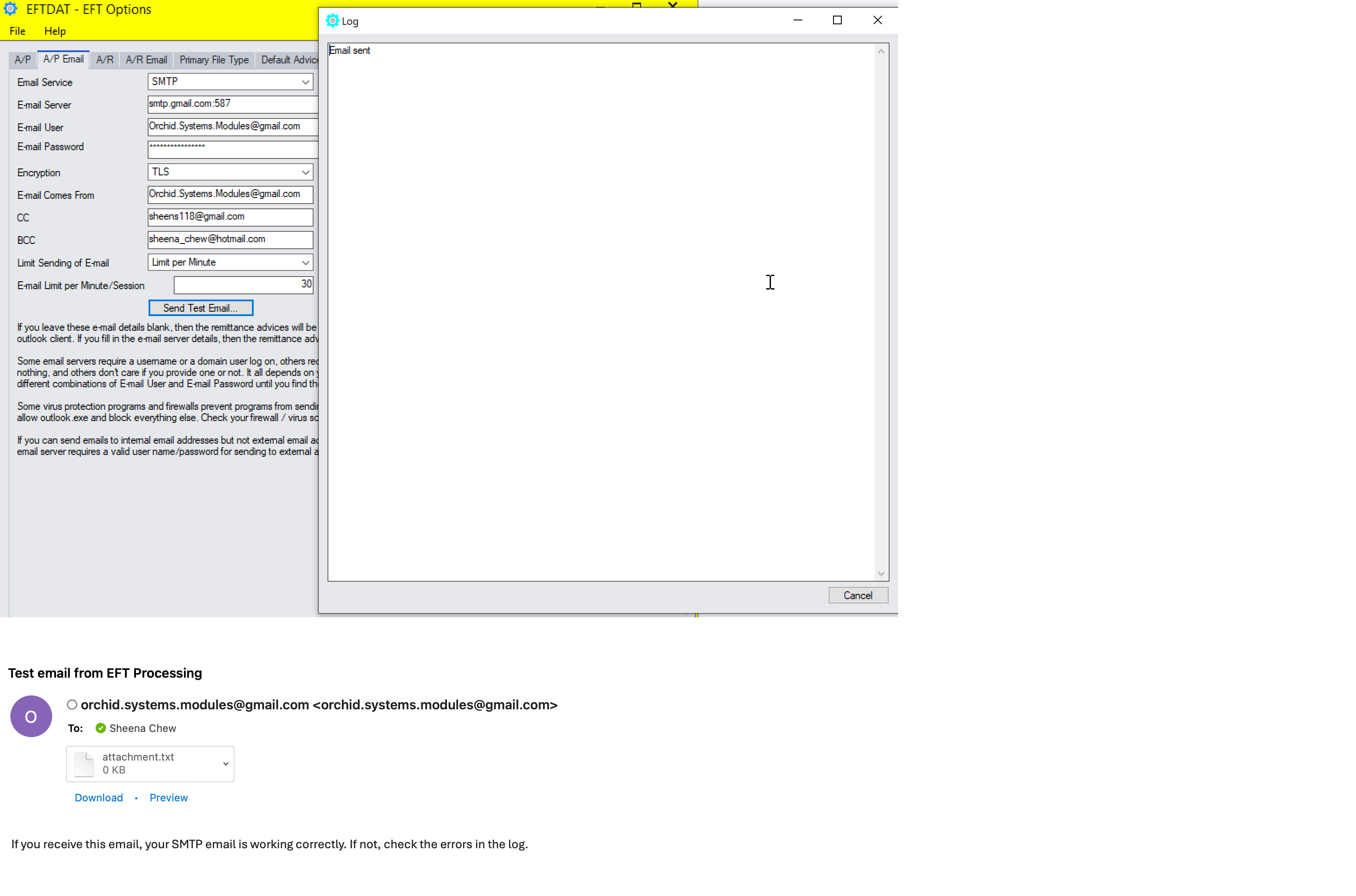Email Tab
The Email tab lets you define your email server. When you fill in the email option on the Orchid Module Options, it will email directly to your email server using the selected service. You can email documents using 2 methods, SMTP with basic authentication or App password or Microsoft Graph (when using Microsoft Office 365 and SMTP basic authentication is not enabled).
Email Service
SMTP (Simple Mail Transfer Protocol). You can use your own SMTP server, or an SMTP service.
Example: SMTP Email Examples
Microsoft Graph. This service sends email via Microsoft Office 365. It is generally used when SMTP Basic authentication is not enabled in Office 365.
Refer to Office 365 and Microsoft Graph
Note: Microsoft Graph is available in the latest product updates for Sage 300 versions 2020 and above, since October 2022.
If you don't fill in the SMTP Details, Orchid Module cannot send emails.
Email Field details
Select the Service you want to use to email:
Basic Authentication SMTP:
: smtp.domain.com:587 Enter the details of the SMTP Server you want to email from.
: There is no specific field for the Port in Orchid modules. You can specify a port number after filling in the email server details. After the email server name, enter “:xx” i.e. colon xx where xx is the port number required.
Tip: The default port is generally port 587 with TLS.
Example: smtp.office365.com:587
and : Enter a correct combination of Email user and password
Note: If using multi-factor authentication and App password, enter the App password you create in he Email Password field. Refer to Using Orchid Modules with Office365 App Passwords
: Enter the email address to be used when sending email.
Example: Orchid.Systems.Modules@gmail.com . You can also enter it in the format {name} <{address}> e.g. Orchid Systems <Orchid.Systems.Modules@gmail.com>
Microsoft Graph:
This service sends email via Microsoft Office 365 where basic authentication is not enabled to use SMTP.
Refer to Office 365 and Microsoft Graph
. Enter the tenant ID (alternatively called the directory ID) from your Microsoft 365 account.
. Enter the client ID (alternatively called the application ID) from your Microsoft 365 account.
. Enter the client secret from your Microsoft 365 account.
Tip: This is actually the secret , not the one called Secret ID. It is the one that you only see once when you first create the client secret.
Tip: The client secret is valid for 2 years maximum. You may need to create a new client secret if emailing with MS Graph suddenly stops working.
. Enter the email address to be used when sending email.
Examples
Refer to the examples below for detailed settings with commonly used mail providers, such as Office 365 and Gmail.
Example: SMTP Email Examples
Options Applicable to EFT Processing only
Send Email copy
In EFT Processing, if you are using the SMTP Email option, you can use the cc or bcc option on the EFT Options > AP and AR email tab if you want a copy of the emailed remittance advice in Outlook.
Using Sage Company Profile details
If you leave the SMTP details blank in EFT Processing> Options Tab, the Sage 300 default way of sending emails will be used. However, the program cannot verify that the email has been sent and cannot report the number of emails sent.
-
It will use SMTP or Microsoft Graph depending on the option selected on the Company Profile,
-
If the details are not filled in, it will use Microsoft Outlook if installed on the client machine.
For more details, refer to Emailing from Sage 300 in Sage 300 documentation.
If you want to use the ability to password protect the PDF attached to emails in EFT Processing, you need to use EFT's SMTP options.
Similarly, if you want to save a copy of the Payslip/paystub in the directory configured on the EFT Setup> Options > Default Advice Tab, you need to fill in the A/P Email or the Payroll Email SMTP details. If emails are sent using default Sage's configuration through Outlook, a copy of the file will not be saved.
Test Email Configuration
You can use the "Send Test Email..." to check your email settings. You will be prompted to enter an email address to send the test email to.
When the email is sent successfully, you will receive a test email.
If not a log file is displayed with the error encountered.

Email sent successfully example

Example: If you receive this email, your SMTP email is working correctly. If not, check the errors in the log.
Tip: Test sending to an email address in the same domain as your SMTP Server and one outside of your domain.
